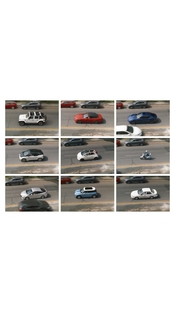Can an average photographer get consistent results from one Cinestill photo to the next?
If they can from let's say Portra or Gold, then yes. If they struggle with those films as well, then no. It's the same thing in terms of consistency.
It just seems from samples I've seen the film is beyond most photographers to edit properly and consistently.
The problem with this conclusion is that it ignores the many other factors that greatly influence what you see online, such as the ones I mentioned before.
Maye they're better off using chromes or a negative type film with a "fixed" color palette.
What people are 'better off' with depends very much on what their requirements are.
There's nothing more, or less 'fixed' about the color palette of any of the Vision 3 cine films than that of any other color negative material.
I get a feeling that you're struggling with the meaning of consistency. In my book, consistency means that you get the same result if you do the same things with the same materials. I.e., repeatability. Any color negative film that Kodak produces is highly consistent. In fact, I don't think there have been 'inconsistent' color films in existence for the best part of a century.
If you mean that people struggle with getting the color balance how they want it when scanning color negative film, then yes, that's certainly an issue. There are literally hundreds of threads on this forum about the topic. It's an inherent problem with handling color negative films, especially when scanning, because there's no absolute color reference (i.e. no 'fixed palette'). The problem is not any different when shooting e.g. Vision3.
The only thing that gets a little more challenging with Vision 3 /Cine films is optical/wet printing, because the gamma of properly developed ECN2 film is lower than of C41 film, and the color balance is different. Hence, you need to overdevelop a little and work with filter settings that feel weird (if you're used to enlarging C41). It's still not a consistency problem, though.





 )
)
